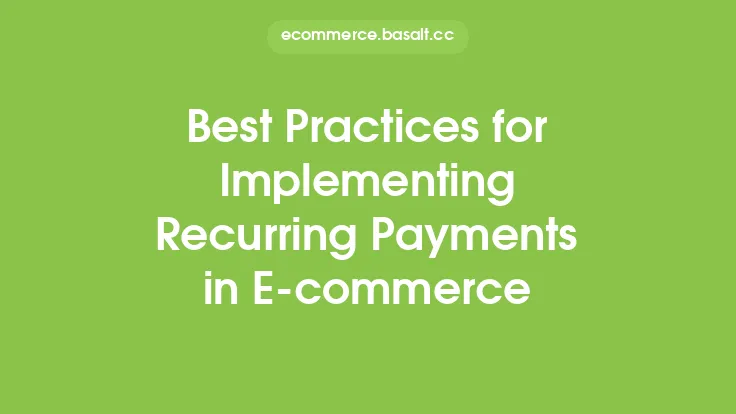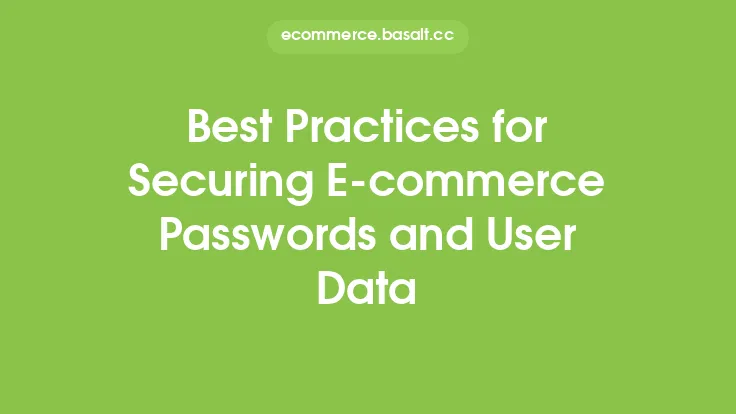As a beginner in the world of e-commerce, it's essential to understand the importance of Search Engine Optimization (SEO) in driving traffic and sales to your online store. SEO is the process of optimizing your website to rank higher in search engine results pages (SERPs) for specific keywords and phrases. In this article, we'll cover the fundamental e-commerce SEO best practices that every beginner should know.
Understanding E-commerce SEO Fundamentals
E-commerce SEO is a subset of SEO that focuses specifically on optimizing online stores for search engines. It involves optimizing product pages, category pages, and other website elements to improve visibility, drive traffic, and increase conversions. To get started with e-commerce SEO, it's crucial to understand how search engines work and what factors influence their rankings. Search engines like Google use algorithms to crawl, index, and rank websites based on relevance, authority, and user experience.
Keyword Research and Planning
Keyword research is a critical component of e-commerce SEO. It involves identifying the words and phrases your target audience uses to search for products like yours. To conduct keyword research, you can use tools like Google Keyword Planner, Ahrefs, or SEMrush. Start by brainstorming a list of keywords related to your products, and then use these tools to analyze search volume, competition, and relevance. Once you have a list of target keywords, you can plan your content and optimization strategy around them.
On-Page Optimization
On-page optimization refers to the process of optimizing individual web pages to rank higher in search engines. For e-commerce websites, this includes optimizing product pages, category pages, and other key pages. Here are some on-page optimization best practices to follow:
- Use descriptive and keyword-rich page titles that accurately reflect the content of each page.
- Write unique and compelling meta descriptions that entice users to click through to your website.
- Use header tags (H1, H2, H3, etc.) to structure and organize your content.
- Optimize product images by using descriptive file names, alt tags, and compressing images to reduce file size.
- Use internal linking to help users and search engines navigate your website.
Content Creation and Marketing
High-quality content is essential for e-commerce SEO. It helps to attract and engage your target audience, build trust and authority, and drive conversions. Here are some content creation and marketing best practices to follow:
- Create unique and compelling product descriptions that highlight the features and benefits of each product.
- Use user-generated content like customer reviews and ratings to build trust and credibility.
- Develop a blog or resource section that provides valuable information and insights to your target audience.
- Use social media to promote your content, engage with your audience, and build your brand.
Technical Optimization
Technical optimization refers to the process of optimizing your website's technical elements to improve search engine rankings and user experience. Here are some technical optimization best practices to follow:
- Ensure your website is mobile-friendly and provides a seamless user experience across all devices.
- Use a secure protocol (HTTPS) to protect user data and prevent security breaches.
- Optimize your website's loading speed by compressing images, minifying code, and leveraging browser caching.
- Use a reliable and scalable hosting solution that can handle high traffic volumes and large product catalogs.
Local SEO and E-commerce
If you have a physical store or ship products to specific geographic regions, local SEO is crucial for your e-commerce business. Here are some local SEO best practices to follow:
- Claim and optimize your Google My Business listing to improve local search visibility.
- Use location-specific keywords and phrases in your content and meta tags.
- Create content that highlights your local presence and expertise.
- Build high-quality local citations and links to improve your website's authority and relevance.
Tracking and Measuring E-commerce SEO Performance
To measure the effectiveness of your e-commerce SEO efforts, you need to track and analyze key performance indicators (KPIs) like organic traffic, conversions, and revenue. Here are some tools and metrics to help you track and measure your e-commerce SEO performance:
- Google Analytics: Use Google Analytics to track organic traffic, conversions, and revenue.
- Search Console: Use Search Console to monitor search engine rankings, impressions, and clicks.
- Ahrefs or SEMrush: Use these tools to track keyword rankings, backlinks, and technical SEO issues.
- Conversion rate optimization (CRO) tools: Use CRO tools to optimize your website's conversion rates and user experience.
Common E-commerce SEO Mistakes to Avoid
As a beginner in e-commerce SEO, it's essential to avoid common mistakes that can harm your website's visibility and credibility. Here are some common e-commerce SEO mistakes to avoid:
- Duplicate or thin content: Avoid duplicating content across multiple pages or using thin content that provides little value to users.
- Keyword stuffing: Avoid overusing keywords in your content, meta tags, or alt tags.
- Poor mobile usability: Ensure your website provides a seamless user experience across all devices.
- Slow loading speed: Optimize your website's loading speed to improve user experience and search engine rankings.
- Lack of security: Use a secure protocol (HTTPS) to protect user data and prevent security breaches.
Conclusion
E-commerce SEO is a complex and ever-evolving field that requires ongoing effort and optimization. By following the best practices outlined in this article, you can improve your website's visibility, drive traffic and sales, and build a strong online presence. Remember to stay up-to-date with the latest e-commerce SEO trends and best practices, and continually monitor and optimize your website's performance to achieve long-term success.





